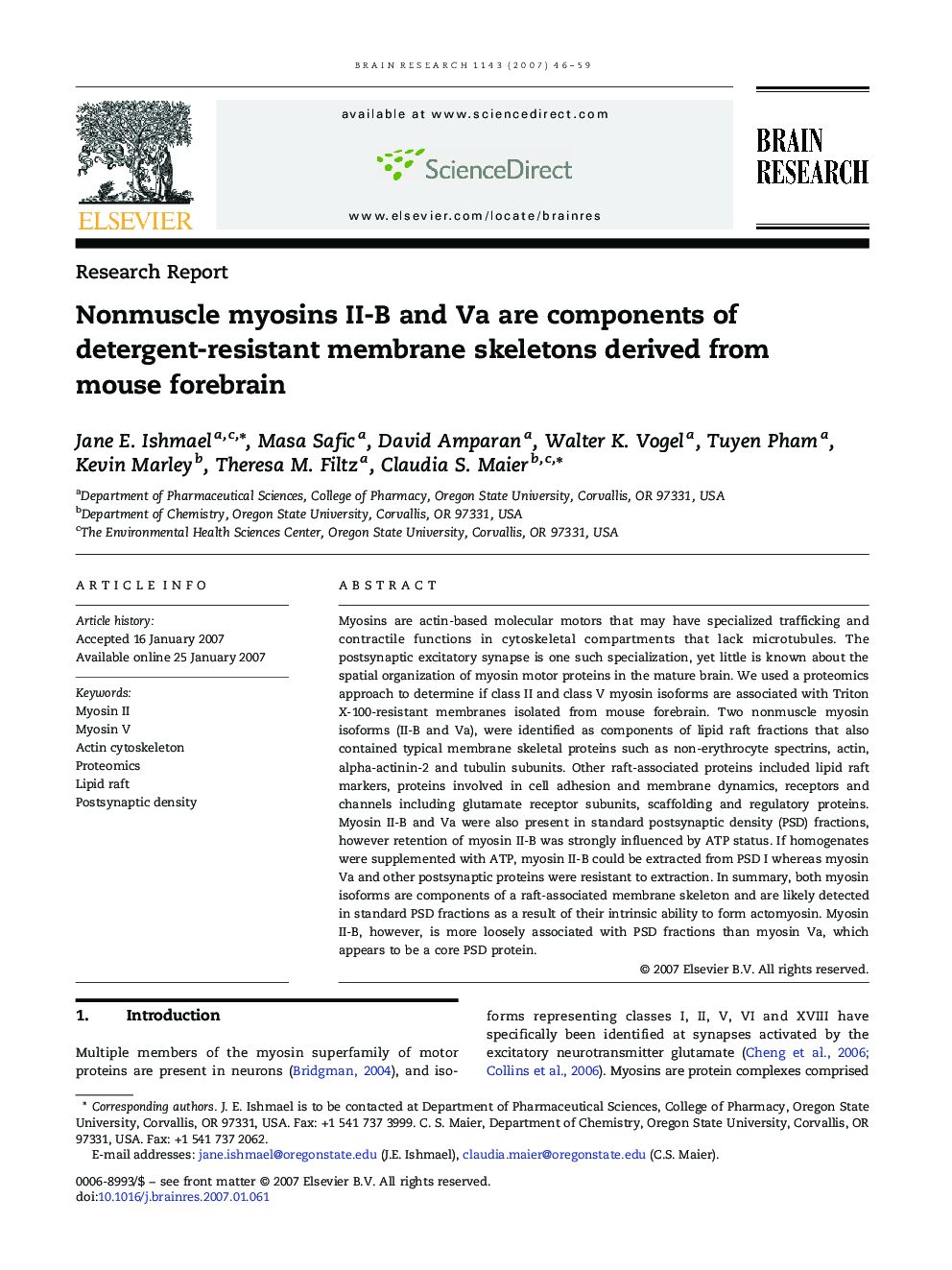| Article ID | Journal | Published Year | Pages | File Type |
|---|---|---|---|---|
| 4331292 | Brain Research | 2007 | 14 Pages |
Myosins are actin-based molecular motors that may have specialized trafficking and contractile functions in cytoskeletal compartments that lack microtubules. The postsynaptic excitatory synapse is one such specialization, yet little is known about the spatial organization of myosin motor proteins in the mature brain. We used a proteomics approach to determine if class II and class V myosin isoforms are associated with Triton X-100-resistant membranes isolated from mouse forebrain. Two nonmuscle myosin isoforms (II-B and Va), were identified as components of lipid raft fractions that also contained typical membrane skeletal proteins such as non-erythrocyte spectrins, actin, alpha-actinin-2 and tubulin subunits. Other raft-associated proteins included lipid raft markers, proteins involved in cell adhesion and membrane dynamics, receptors and channels including glutamate receptor subunits, scaffolding and regulatory proteins. Myosin II-B and Va were also present in standard postsynaptic density (PSD) fractions, however retention of myosin II-B was strongly influenced by ATP status. If homogenates were supplemented with ATP, myosin II-B could be extracted from PSD I whereas myosin Va and other postsynaptic proteins were resistant to extraction. In summary, both myosin isoforms are components of a raft-associated membrane skeleton and are likely detected in standard PSD fractions as a result of their intrinsic ability to form actomyosin. Myosin II-B, however, is more loosely associated with PSD fractions than myosin Va, which appears to be a core PSD protein.
